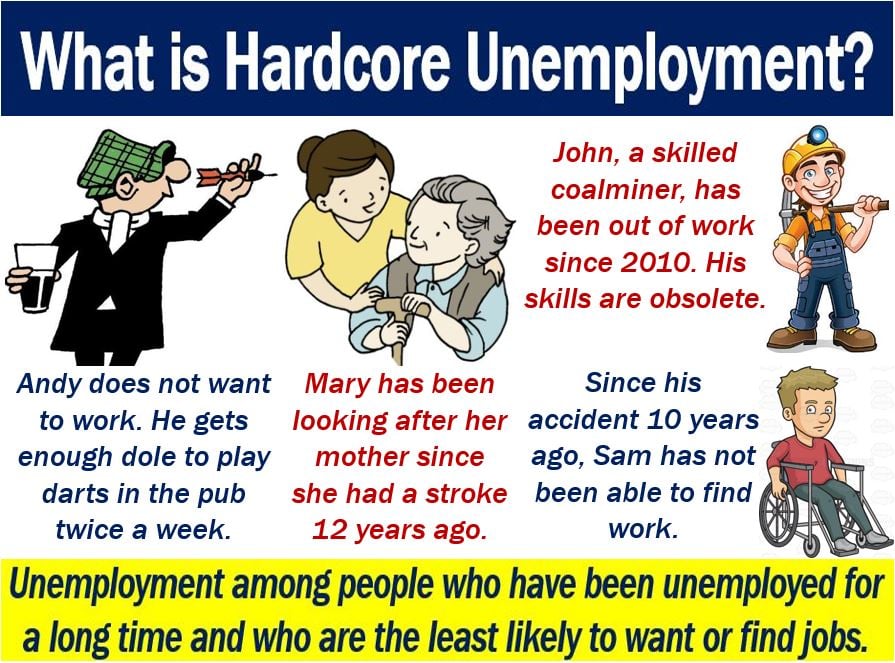Hardcore unemployment refers to individuals who have been unemployed for an extended period, often considered long-term unemployed. It’s a common misconception to assume that these individuals don’t want to work; many face significant barriers to employment. Some might have skills that have become obsolete in the modern job market, while others may have never held full-time positions due to various reasons, such as gaps in education or training.
Many countries exclude hardcore unemployment figures from their official unemployment statistics.
Many hardcore unemployed individuals lack the necessary skills that the job market seeks. Either their skills have become obsolete, or they simply have no skills at all.
In some economies, including the developed nations, hardcore unemployed people are not eligible for unemployment benefits. However, it’s important to note that benefits varies by country and is based on factors like the duration of previous employment, the reason for unemployment, and more.

People are long-term unemployed for a variety of reasons.
Hardcore unemployment and different types
There are several different categories of unemployment.
Classical unemployment
Classical unemployment occurs when demand for jobs is greater than the number of available positions. In other words, there are more people seeking jobs than there are jobs available.
Economists have put forward many reasons for this type of unemployment. For example, if the minimum wage is too high, there might be many potential jobs out there that do not exist.
Put simply; employers in many companies cannot afford to take on more workers.
Cyclical unemployment
This type of joblessness fluctuates according to the business cycle. The business cycle or boom-bust cycle, refer to the alternating periods of recession and recovery that economies experience.
When economic growth slows down, or GDP shrinks unemployed rises. However, when GDP growth accelerates, unemployment declines. GDP stands for Gross Domestic Product.
Frictional unemployment
Frictional unemployment consists of individuals who are between jobs. In other words, they are still attending interviews, sending resumes, and searching for their ideal job.
When unemployment is extremely low, frictional unemployment is relatively high. It is high because people spend longer looking for their ideal position. They spend longer because they are not worried about ending up without any job.
However, when unemployment is high, frictional unemployment is low. People are less fussy and want to get back to work as soon as possible.
Hardcore unemployment
There is always a proportion of the population that is unemployed. They are unemployed either because they do not want to work or can’t. For example, those who can’t work may include people with mental or physical disabilities or those whose skills have become obsolete.
Long-term caregivers may also find it harder to get a job. However, thanks to modern technology and the Internet, the number of teleworking vacancies has increased considerably.
Teleworking refers to working at home, in a cafe, a train, i.e., away from where the employer is.
